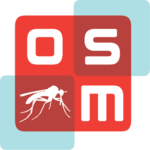OSDD:Huh?
Open Source Drug Discovery (OSDD) is the application of methods widely employed in open source software development to the process of drug discovery - that all data and ideas are freely shared between participants and that anyone may take part.
Open source software development
There are many examples of high quality, robust and widely used applications that were developed by an open source model. In these cases the development was open to anyone, and the final product emerged from a distributed team of participants. In many cases a kernel of work was funded, while the extra development by the community was not.
Open data
Many valuable initiatives advocating open data have emerged in which large datasets are deposited to assist groups of researchers (e.g., Pubchem, ChEBI and SAGE Commons); the release of the GSK data falls into this class. These important ventures employ the internet merely as an information resource, rather than as a means for active collaboration.
For people to work together on the web, data must be freely available. Thus the posting of open data is a necessary but not sufficient condition for open science to happen. Available data may be used by anyone with no requirement to work with anyone. As an example, the deposition of malaria bioactivity data in mid-2010 was a significant contribution to the field, but use of the data does not oblige the user to collaborate with anyone.
Open Innovation and Prize-based Incentives
As an effort to stimulate innovation, several pharma companies have adopted an "open innovation" model. This is a somewhat nebulous term that means companies must try to bring in the best external ideas to complement in-house research.NRDD Article The mechanisms of bringing in new ideas are:
- Prizes for solutions to problems (e.g., Innocentive). A competition means that teams work in isolation and do not pool ideas. Such a mechanism does not change the nature of the research, rather the motivation to participate. The pharmaceutical industry itself essentially already operates on this model.
- Licensing agreements with academic groups/start-ups (e.g., Eli Lilly’s PD2 program). In such arrangements, companies may purchase the rights to promising ideas. Vigilance of intellectual property may of course shut down any open collaboration at a promising stage. It has therefore been proposed to limit open innovation science to “pre-competitive areas” (e.g., toxicology) but to date the industry has been unable to define what the term “pre-competitive” means beyond the avoidance of duplication of effort and the requirement for public-domain information resources.NRDD article
Crowdsourcing
Several highly successful crowdsourcing experiments have emerged in which tasks are distributed to thousands of participants, such as the Foldit and Galaxyzoo projects. What is notable about such cases is the speed with which the science progresses through the harnessing of what has been termed the “cognitive surplus”.[Shirky, C. Cognitive Surplus: Creativity and Generosity in a Connected Age; Penguin, 2010.]
Open science
Open Source Drug Discovery
